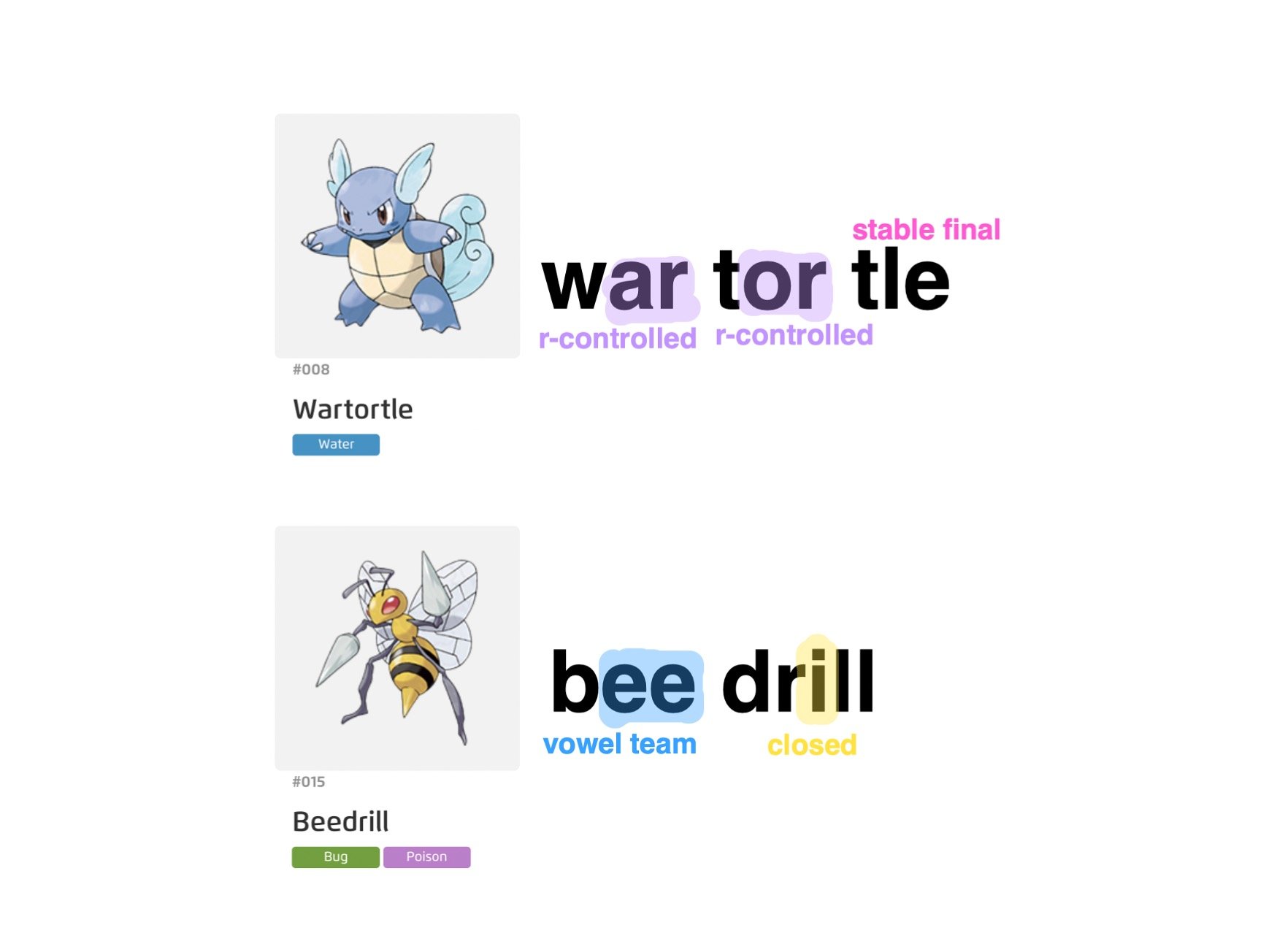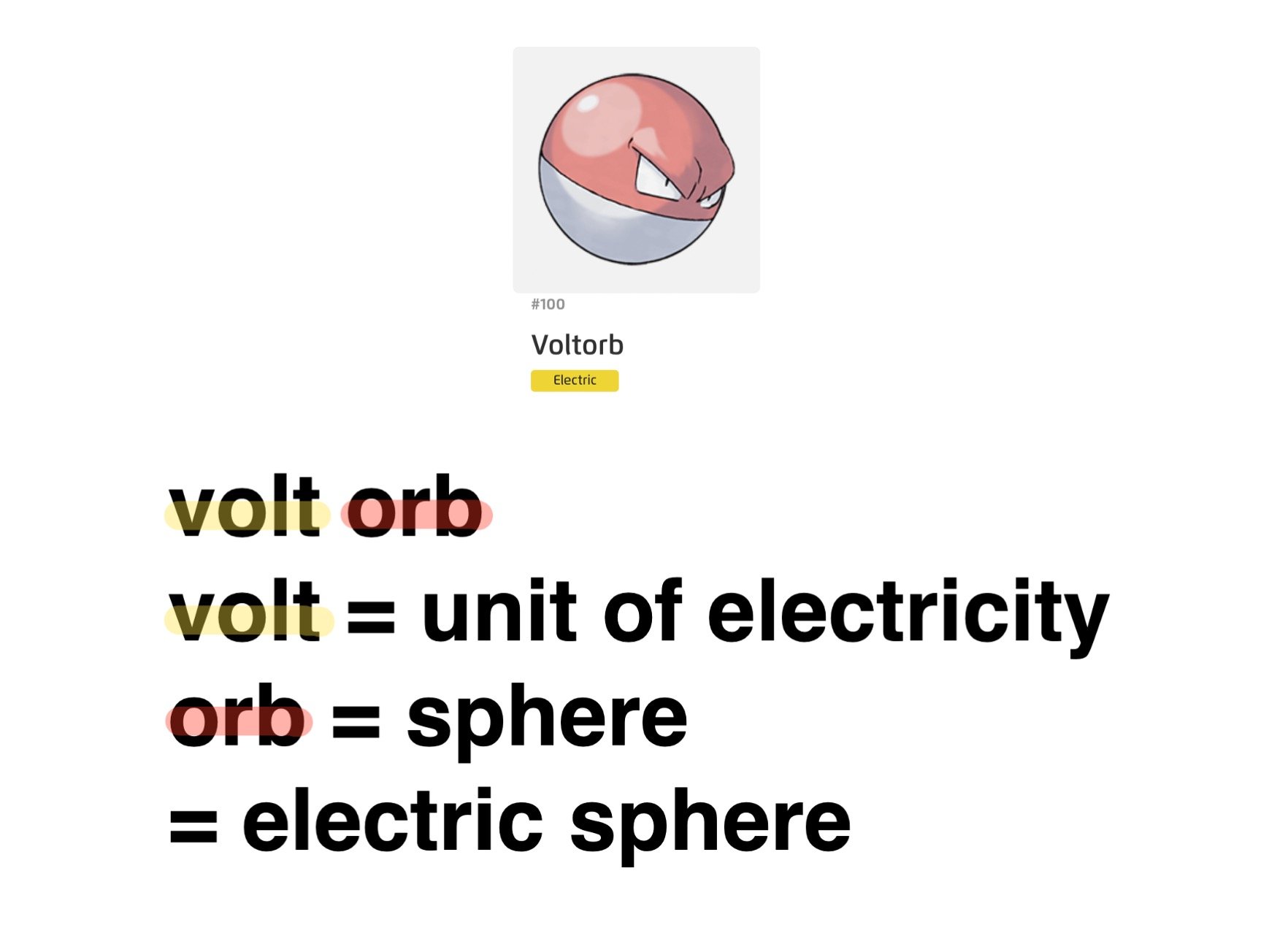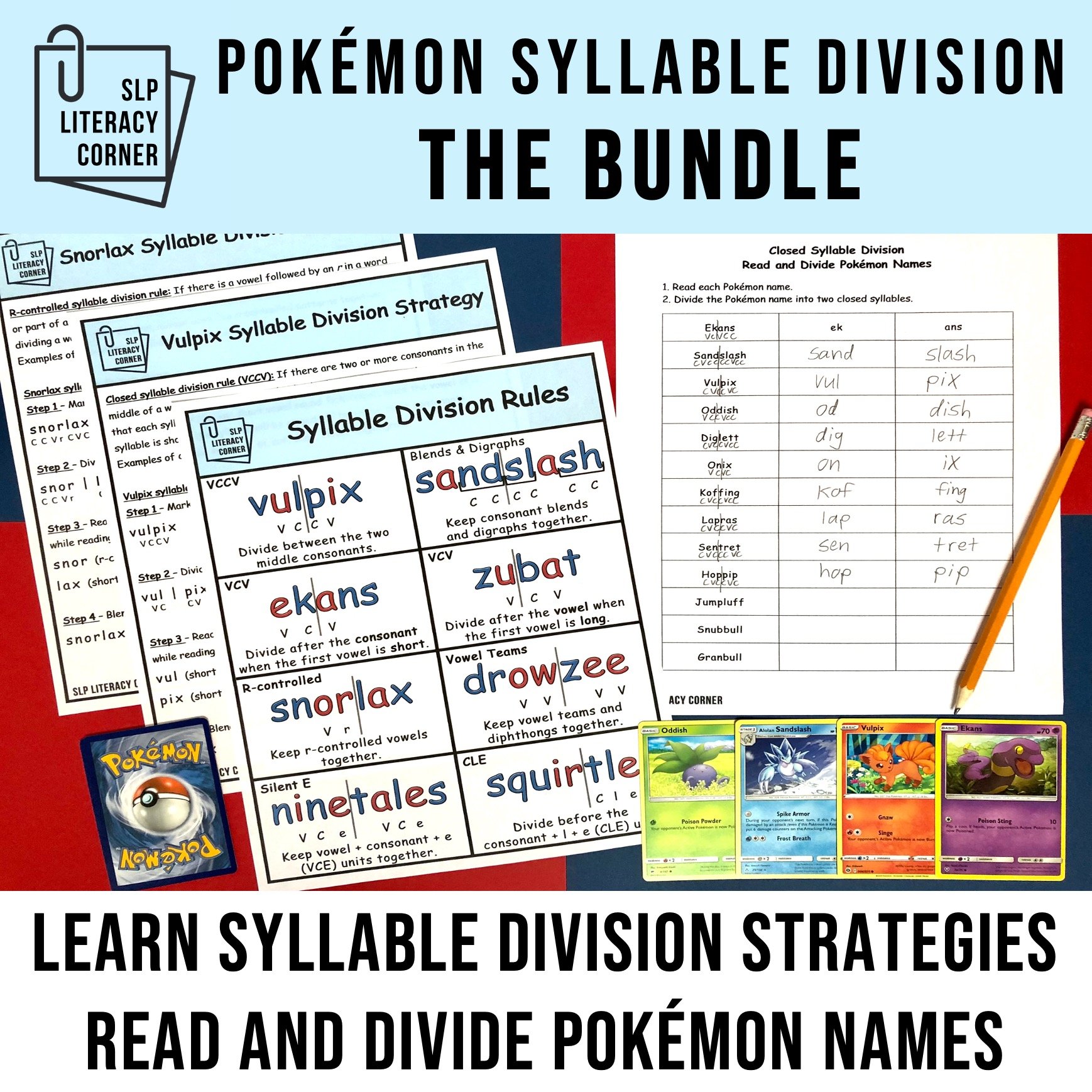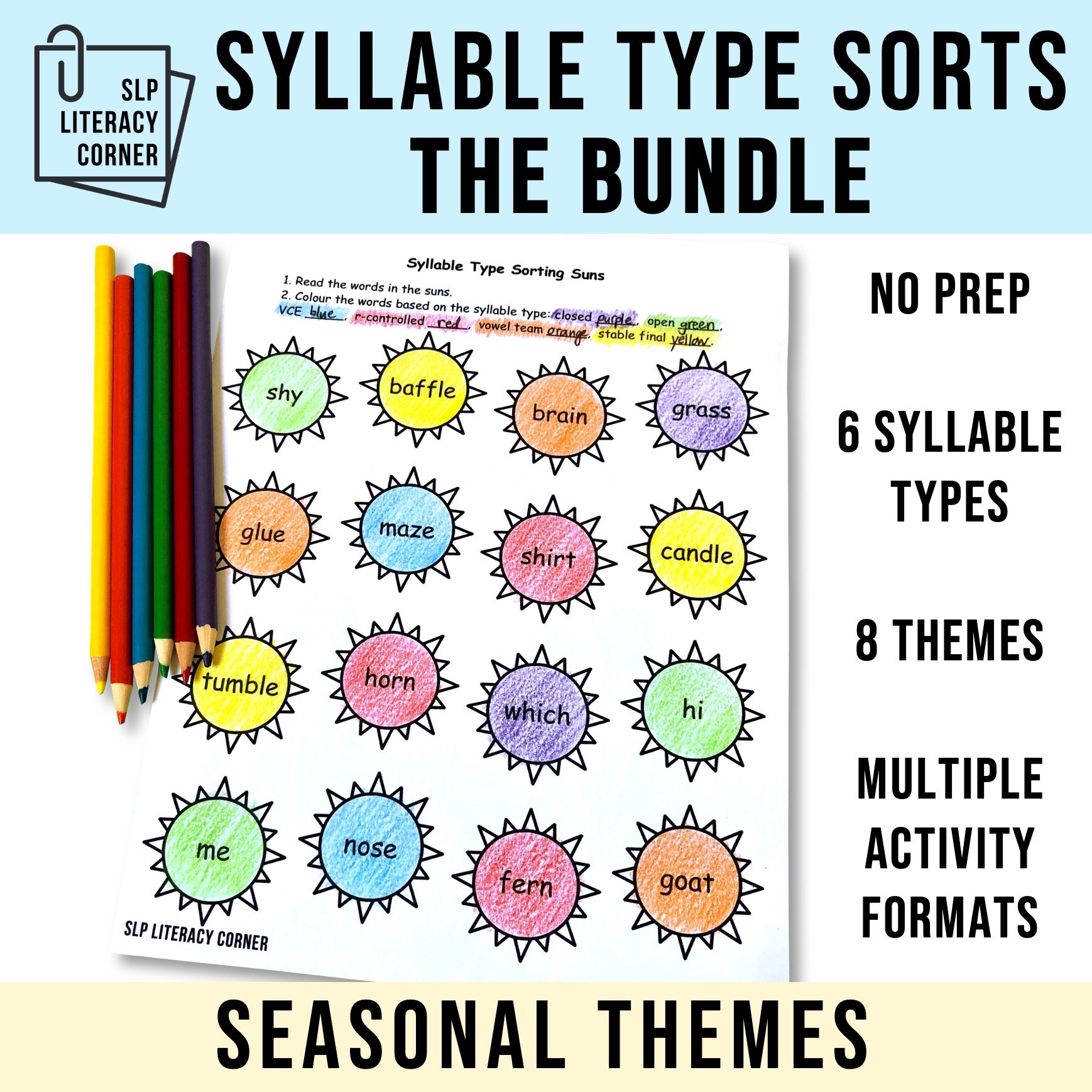Websites for Literacy - Pokémon Pokédex
Written by: Brianna Guild, MHSc SLP(C)
Date: September 29, 2023
Updated: February 24, 2025
Pokémon is one of my personal interests, and an interest I share with many of my students! There are many ways that I like to use Pokémon in literacy lessons to engage my Pokémon-loving students. Here are some activities you can do using the Pokédex on the Pokémon website, which includes all the Pokémon and their Pokédex entries.
1. Phonological Awareness
- Phoneme isolation skills: identify the initial or final phoneme (sound) in Pokémon names. For example, the initial phoneme in Squirtle is /s/.
- Segmenting skills: segment Pokémon names into phonemes or syllables. For example, Charmander is segmented into the syllables Char - man - der.
- Blending skills: this can be played as a “secret Pokémon” game where you orally give a student phonemes or syllables and they have to blend them together to determine the “secret Pokémon”! For example, the syllables Bulb - a - saur are blended into Bulbasaur.
2. Phonics
- Reading multisyllable words: whether you teach specific syllable division rules or a more flexible approach to reading multisyllable words, Pokémon names are a fun way to practice reading multisyllable words! Flexible syllable division strategies you might use include: identifying morphological or etymological units of longer words, taking words apart using the reliable rule that every syllable has at least one vowel, and “flexing” vowel sounds to correctly adjust the pronunciation of words (also known as set for variability or mispronunciation correction).
- Syllable types: some phonics programs teach the 6 main written syllable types in English (closed, open, magic e, r-controlled, vowel team, stable final). After dividing Pokémon names into syllables, determine each syllable type. For example, Wartortle: war = r-controlled, tor = r-controlled, tle = stable final.
- Word lists: create a word list of Pokémon names with the sounds or spellings a student is learning and/or reviewing (e.g., “er” sound - Charmander, Caterpie, Squirtle, Poliwhirl) to use for reading and spelling activities.
- PHONICS TIP: use the “Name and Number” search bar at the top of the Pokédex website to search for specific spelling patterns (e.g., ck, tch, dge, ar, er, ai, ee), select the magnifying glass to search, and you see all the Pokémon names containing the specified spelling!
3. Vocabulary
- Vocabulary: read Pokédex entries to build vocabulary knowledge. Highlight new and key vocabulary words in the entries as you read, and support students to define these words. Grab some vocabulary organizers here.
- Morphology & Etymology: use Pokémon names to practice morphology skills (determining word parts and their meanings) and etymology skills (the study of the origin of words). Pokémon names (the word) often give us information about the Pokémon itself (the meaning). For example, Voltorb: volt (unity of electricity) + orb (sphere) = electric sphere. Check out Pokémon Name Origins (Etymology) for a complete list of Pokémon name origins.
4. Reading Fluency
- Accuracy and rate: Word level - create a word list of Pokémon names with the sounds or spellings a student is learning and/or reviewing to use in repeated and/or timed word level reading activities to work on reading accuracy and rate. Sentence level - select Pokémon with target sounds or spellings, and do repeated and/or timed readings of their Pokédex entries.
- Expression: encourage students to read with expression by creating a list of different feelings and associated Pokémon (e.g., read sentences happy like Pikachu, angry like Wartortle, sad like Gloom, etc).
5. Reading Comprehension
- Reading Pokédex entries: these short texts are great for working on vocabulary, sentence comprehension, and inferences. For example, a Pokédex entry for Venusaur, says "While it basks in the sun, it can convert the light into energy. As a result, it is more powerful in the summertime." The student needs to understand that the words basks, convert, and energy. They need to realize that the word "it" is a cohesive tie or pronoun referent that refers to Venusaur. They can also make some inferences about what environments Venusaur might live in (likely places that are sunny and warm because it converts sunlight into energy), and what might happen if Venusaur was stuck somewhere cloudy and rainy (likely it would be less powerful because it would have access to less sunlight).
6. Writing
- Pokémon writing prompts: it can be challenging to get some students engaged in writing, so try getting them to write about Pokémon! Find Pokémon with the sounds or spellings the student is working on (e.g., for the sound “a” as in acorn: Raticate, Clefable, Aipom, Taillow, Bayleef, Inkay), and have the student write sentences or a story about these Pokémon. Use the Pokédex entries for inspiration!
Join the SLP Literacy Corner email newsletter to get access to exclusive free resources, including Pokémon alphabet anchor words, and Pokémon syllable division rule charts. Sign up here!










